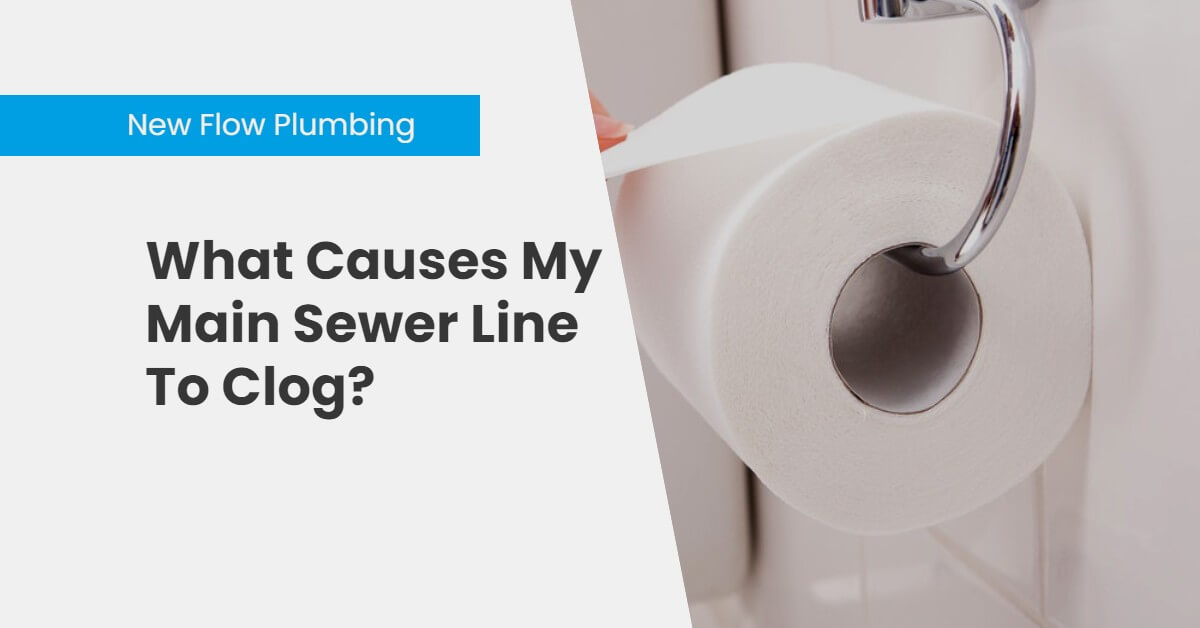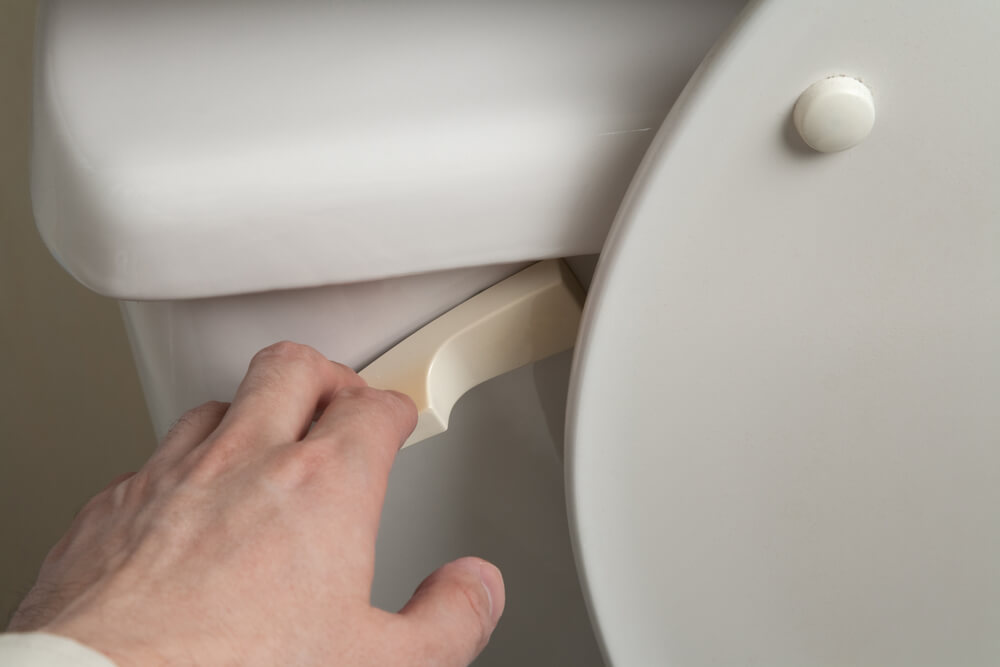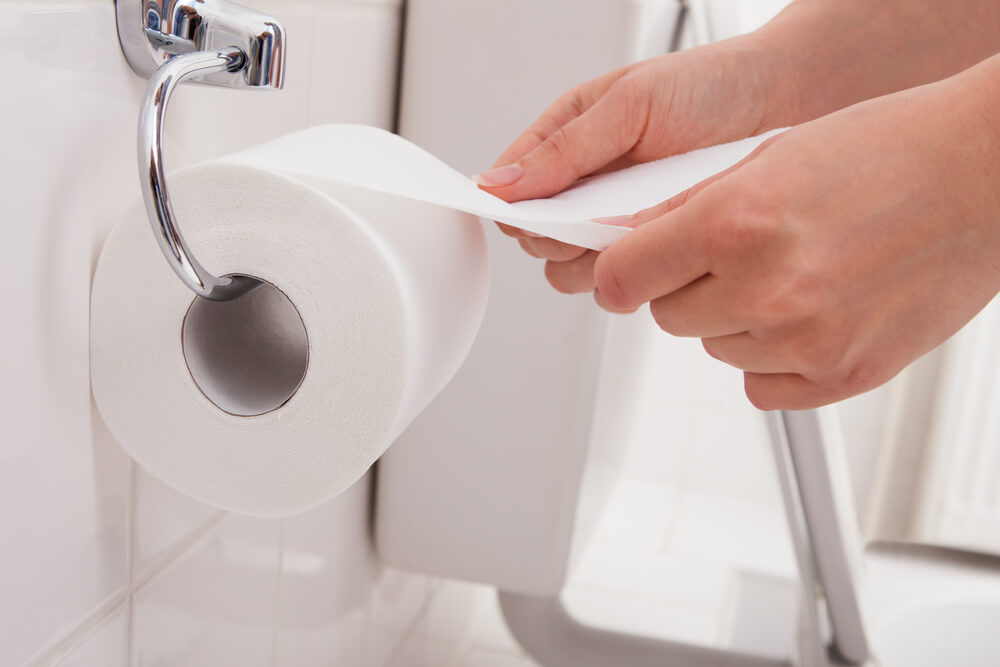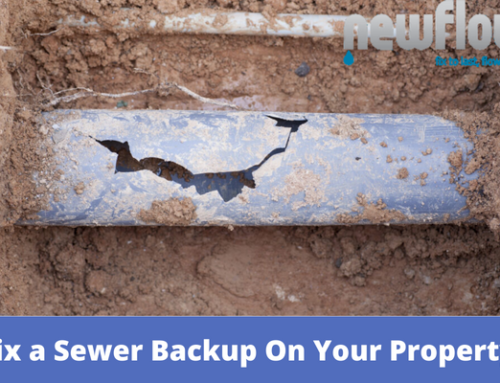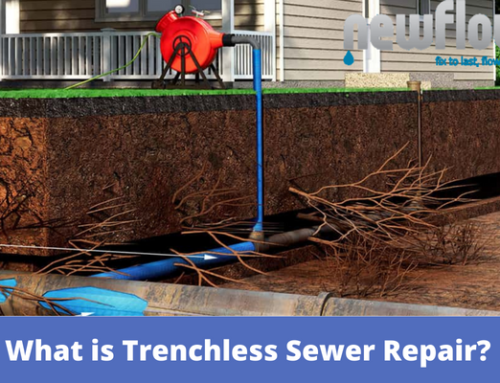What Causes My Main Sewer Line To Clog?
Are you asking yourself, “what causes my main sewer line to clog?” Follow along! This article tells you everything you need to know about sewer line clogs. Let’s start with what is the main sewer line?
What Is The Main Sewer Line?
The main sewer line is the pipe that runs underneath your home, connecting all of your drain lines, carrying waste to the city connection. The sewer line is split into parts: the upper and lower laterals.
Upper Sewer Lateral -These pipes typically run under your yard and foundation. The upper lateral begins below your foundation and ends at a cleanout near your sidewalk or property line.
Lower Sewer Lateral – The lower lateral starts where the upper ends and connects to the city-owned sewer line. These lines run under the public road.
Don’t confuse the main sewer line with the city-owned sewer line. The main sewer line (containing the upper and lower lateral sections) runs under your property and is your responsibility to repair. While the sewer line that runs under the public road is the city’s responsibility to repair.
Check out more about – Signs of a collapsed sewer line.
What Causes My Main Sewer Line To Clog?
Below are the main reasons sewer lines clog.
Other Items You Should Not Flush
Do not flush anything on this list!
What Should I Flush Down My Sewer Line?
You should only flush a moderate amount of toilet paper (because even too much can clog a drain) and human waste. Do not flush anything else down your sewer lines. The cost to repair a clog could reach thousands of dollars.
How To Clean A Clogged Sewer Line
If the only issue you have is a clogged sewer line, plumbers will recommend a sewer cleaning solution, such as hydro-jetting. Hydro-jetting uses a self-propelled nozzle that shoots up to 4,000 PSI of water, clearing away any debris. The pipes are accessed using a sewer line cleanout on your property. Whether you have tree roots or sludge clogging your sewer line, hydro-jetting uses specific nozzles for different obstructions.
How To Fix A Damaged Sewer Line
If your sewer line clog is fixed but the problem persists, you might need sewer repair. Luckily for you, we have the best solutions for fixing a damaged sewer line.
Pipe Lining (Trenchless)
Pipe lining is a trenchless sewer repair method that can safely replace your sewer line without digging up floors. A CCTV sewer camera inspection will determine if your pipes qualify for trenchless repair methods.
The process begins when an epoxy-impregnated liner is inserted into the old pipe and inflated, creating a new pipe inside the old one. Pipe lining can be considered replacement or repair depending on whether the whole pipe length will be lined or just a section. If only a section of pipe (a spot repair) is lined, it is considered a repair. If you line the entire sewer line, it is like getting a brand new pipe installed (aka replacement).
Pipe Bursting (Trenchless)
Pipe bursting is where a new HDPE (high-density polyethylene) pipe is attached to a winch with a cone-shaped bursting head and pulled through the damaged line. The damaged pipe breaks apart as the new one takes its place, giving you a durable, brand-new sewer line.
Conventional Trenching
If a sewer pipe is highly damaged, you will have to replace the pipe using traditional trenching methods. A sewer line must be sloped toward the city connection, allowing gravity to move sewage down the line. If contractors installed the pipe using the wrong slope, the waste begins to flow toward your home. These types of pipes are considered back-pitched, and trenchless technology does not work on back-pitched pipes.
Traditional methods involve digging up your yard and trenching through your home. The procedures are invasive, but trenching is the only solution for collapsed, disintegrated, or back-pitched pipes.
Who Can Repair A Sewer Line Clog?
It’s time that New Flow Plumbing comes in to save the day. We’ll get you started with a CCTV sewer camera inspection to determine where your problems come from. Then, we give you a free repair estimate, followed by available repair options. Whatever the issue, New Flow Plumbing will have your plumbing running perfectly again.

